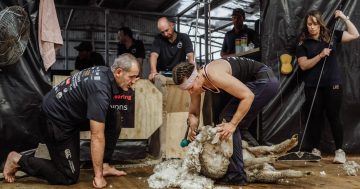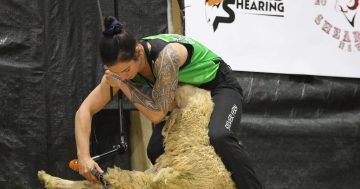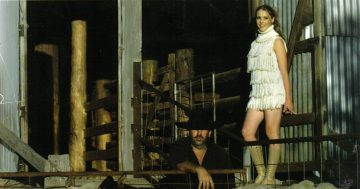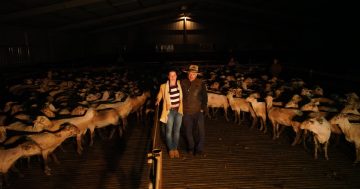
Shearing is the toughest job in Australia according to a University of Adelaide research paper. Photo: Hannah Sparks.
NSW shearing contractors and woolgrowers say Australia’s shearer shortage existed long before COVID-19 border closures highlighted the crisis.
NSW Farmers Yass Branch chair Carolina Merriman said there has been a shortage of shearers in her district for years, not just since the pandemic stopped shearers from New Zealand and the UK travelling to Australia to work.
“You know it’s bad when shearing contractors are looking for shearers on Facebook,” said Carolina, referring to a local contractor who recently turned to Facebook as a last resort to find workers.
“Contractors are in the industry day in, day out and they still can’t find roustabouts, wool classers and shearers.”
Hilltops Council Mayor Brian Ingram runs a shearing contracting business in Young and said he is chasing workers “all the time at the moment”. He said the NSW industry lost a lot of shearers during the three-year drought that forced a lot of farmers to sell their sheep, and shearers to find alternative work.
The border closures and drought have added to the shortage, however the Australian Bureau of Statistics shows the number of shearers nationwide has dropped by 13 per cent (about 2500 shearers) in the past five years.
Shearing Contractors Association of Australia (SCAA) secretary Justin Letchford described the crisis as being similar to a “slow moving car crash”.
“We aren’t going from having enough shearers to no shearers in Australia – and we won’t – but we are at a point where the industry will have to rethink how it attracts and retains shearers,” he said.
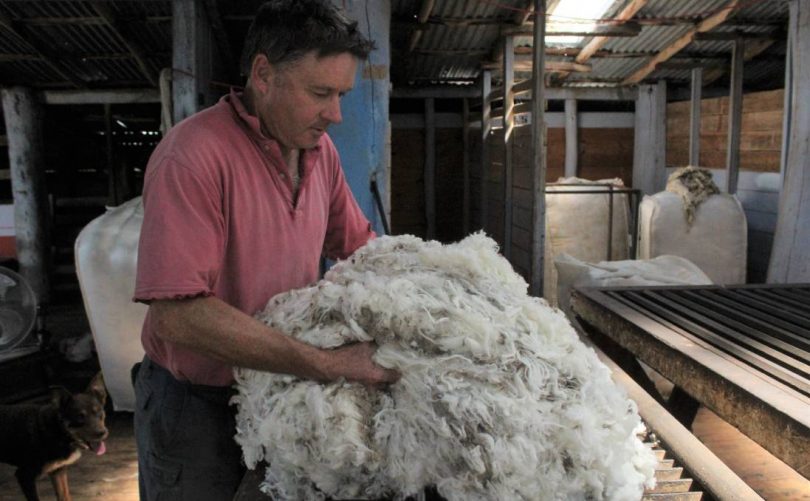
Wool Producers Australia president and Yass woolgrower Ed Storey said some shearing shed conditions are very poor. Photo: Hannah Sparks.
Soon shearers will no longer have the capacity to work for woolgrowers with smaller herds, such as 500 sheep, during the peak periods. Instead, shearers will prioritise working for the larger woolgrowers who can guarantee longer periods of work, said Justin.
Industry educators, including TAFE NSW and Australian Wool Innovation (AWI), said there is a growing demand for shearing courses. However, shearing contractors and woolgrowers said the problem is shearers aren’t staying in the job.
An ongoing issue is the condition of shearing sheds, with many without basic amenities such as running water, toilets, a fridge or first-aid kit.
According to a research paper from University of Adelaide, shearing is the toughest job in Australia, with shearers working up to 12-hour days. Plus, they are often working in hot temperatures and sheds located down dirt roads, hundreds of kilometres from home.
Some people in the industry say the government needs to provide farmers with financial incentives to improve the working conditions in their sheds, with little money available since the drought and the price of wool dropped.
Others, such as Wool Producers Australia president and Yass woolgrower Ed Storey said the financial incentives already exist in tax deductions, and improvements to sheds can be made without money.
“The condition some shearing sheds are in is disappointing,” he said. “We are seeing a lot of new sheds being built and renovations taking place, which is great, but even an old shed can be smartened up.
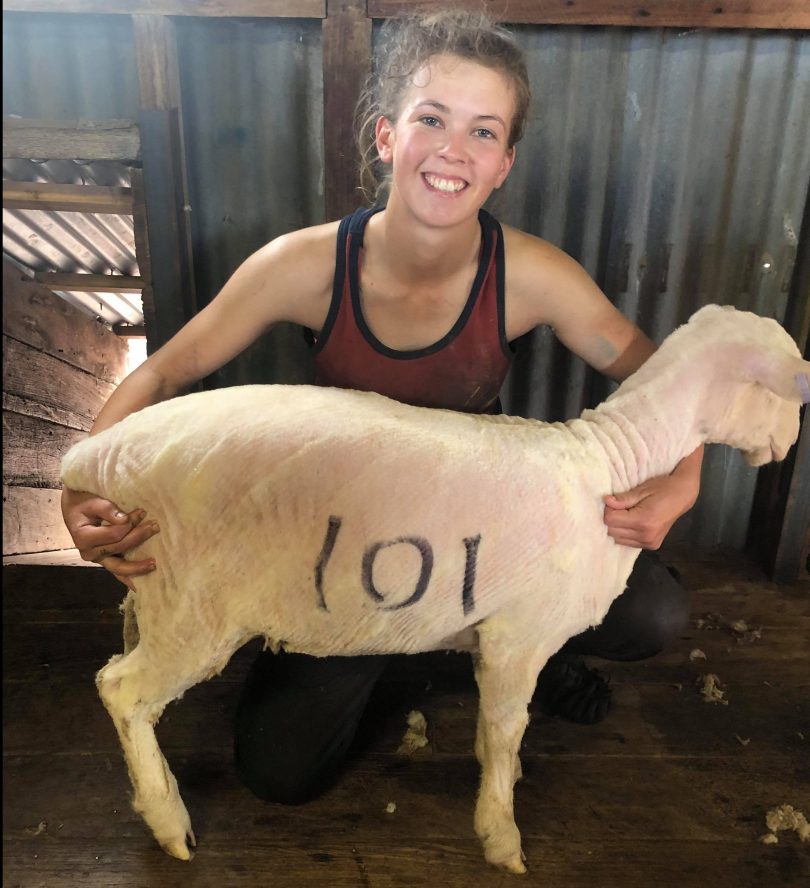
At age 22, Joanna Treasure is bucking the trend as one of the few young people joining the shearing industry. Photo: Supplied.
“When shearers walk into a shed, it’s clear if the woolgrower has tried to present the workplace in a safe and clean way. Woolgrowers can provide clean toilets, clean water and soap – a few basic things that are not hard to do – to show they care for the shearers.”
The size of sheep today is another issue forcing shearers – especially older shearers – out of the industry, according to shearing contractor Brian Ingram.
“The average ram used to be 80kg; now everything seems to be 80kg,” he said.
SCAA secretary Justin Letchford said he receives a phone call at least once a month from a shearing contractor complaining about the size of sheep.
As a result, the shearing industry has among the highest workers’ compensation rates in Australia due to injuries, he said.
That’s why many in the industry are eager to see more young people start shearing to allow older shearers to retire, find alternative work or move to the shed floor and help with roustabouting or wool classing.
At the age of 22, Joanna Treasure, from Cowra, is bucking the trend as one of the few young people, and females, joining the shearing industry. She grew up in farming and has fond memories of days at home from school helping her dad with shearing each year. She also wasn’t prepared to let the status quo put her off from having a go.
“I became a shearer because people kept telling me not to,” she said. “I was told it was ‘too hard’ and I didn’t like the implication that I couldn’t hack it. So I had something to prove by learning to shear. Just by chance, I absolutely love it.”

Joanna Treasure shearing a sheep in Cowra. Photo: Supplied.
NSW Farmers Guyra Branch chair Callan Schaeffer led a motion that was passed at the 2019 NSW Farmers Annual Conference that supports the shearing industry being a registered trade as an attraction strategy for the industry.
“We want to make it easier for people to get into the industry,” he said. “Shearing as a registered trade would give another option to those in year 10 looking to leave school and get into a trade.
“At the end of the day, they can make a lot more money and in a quicker amount of time in shearing than they can as a plumber or electrician.”
While TAFE NSW and AWI offer shearing and wool handling courses across NSW, people such as Mr Ingram and Mr Storey said training also needs to exist in the sheds.
Mr Ingram said traditionally shearers would start on the shed floor as a roustabout before working their way up to the shearing stands.
Mr Storey agrees and said the industry has a responsibility to promote the benefits of shearing and opportunities for people to learn.
Both of them said they used to regularly have a learner with them in the shed, but haven’t recently due to the shortage.







